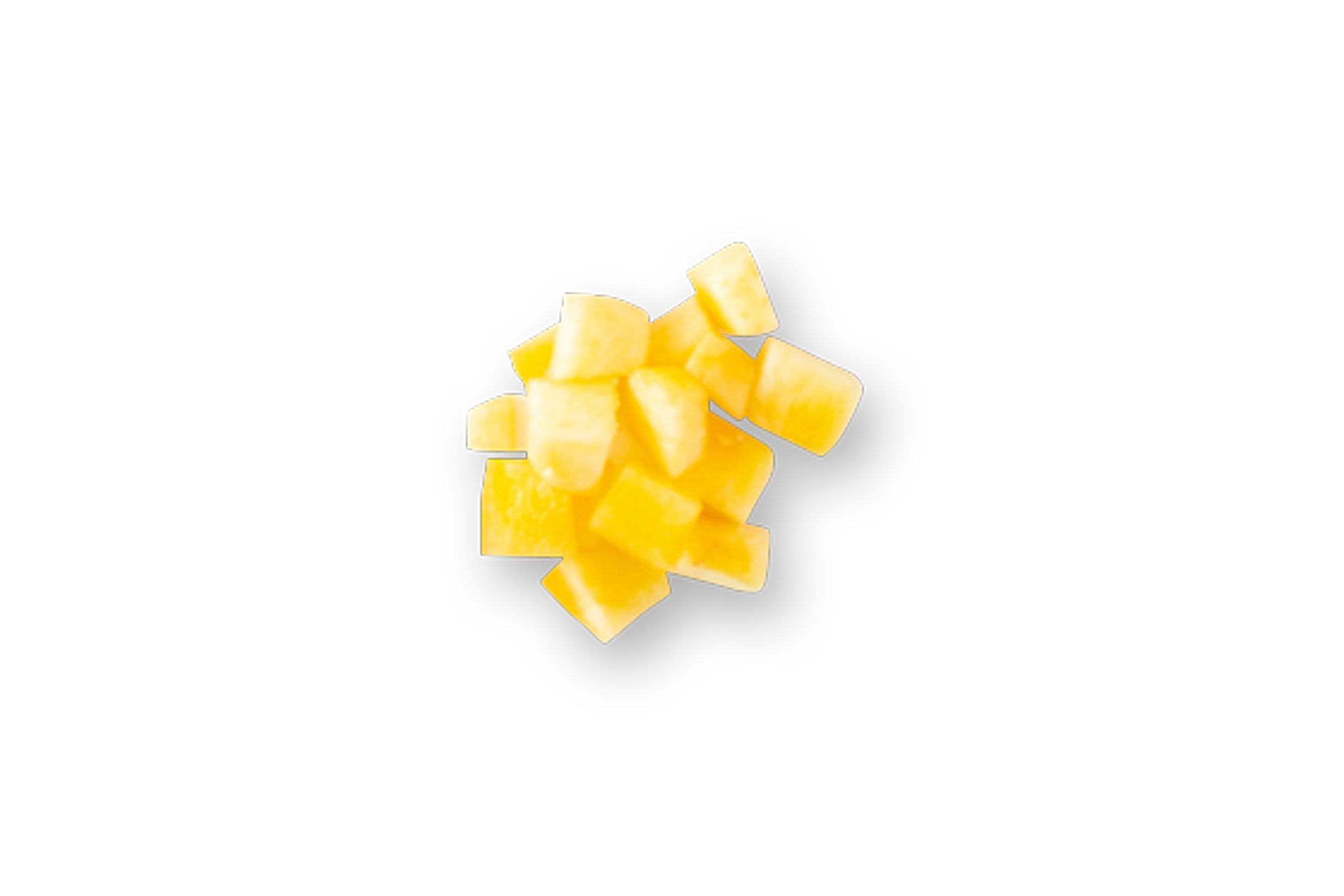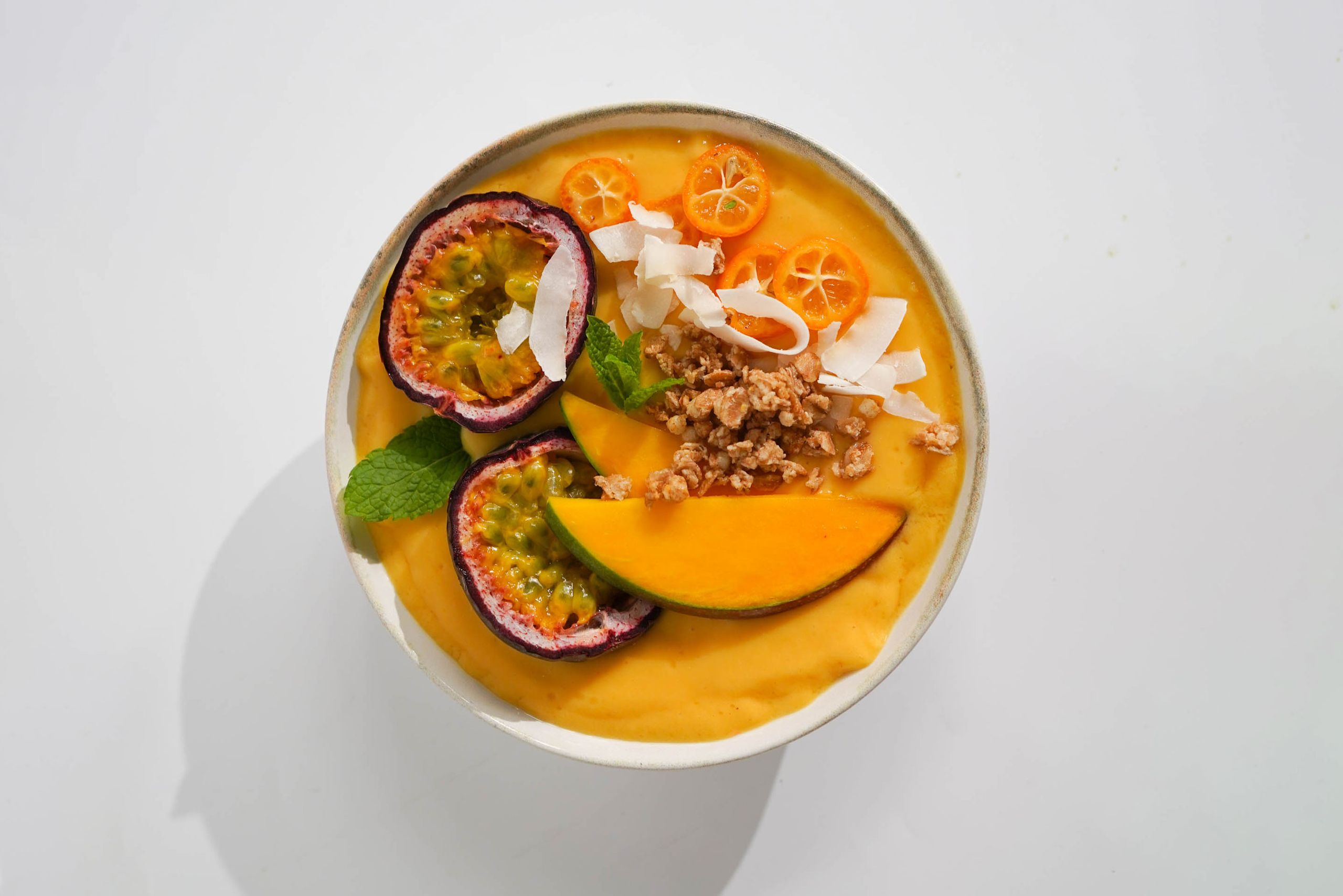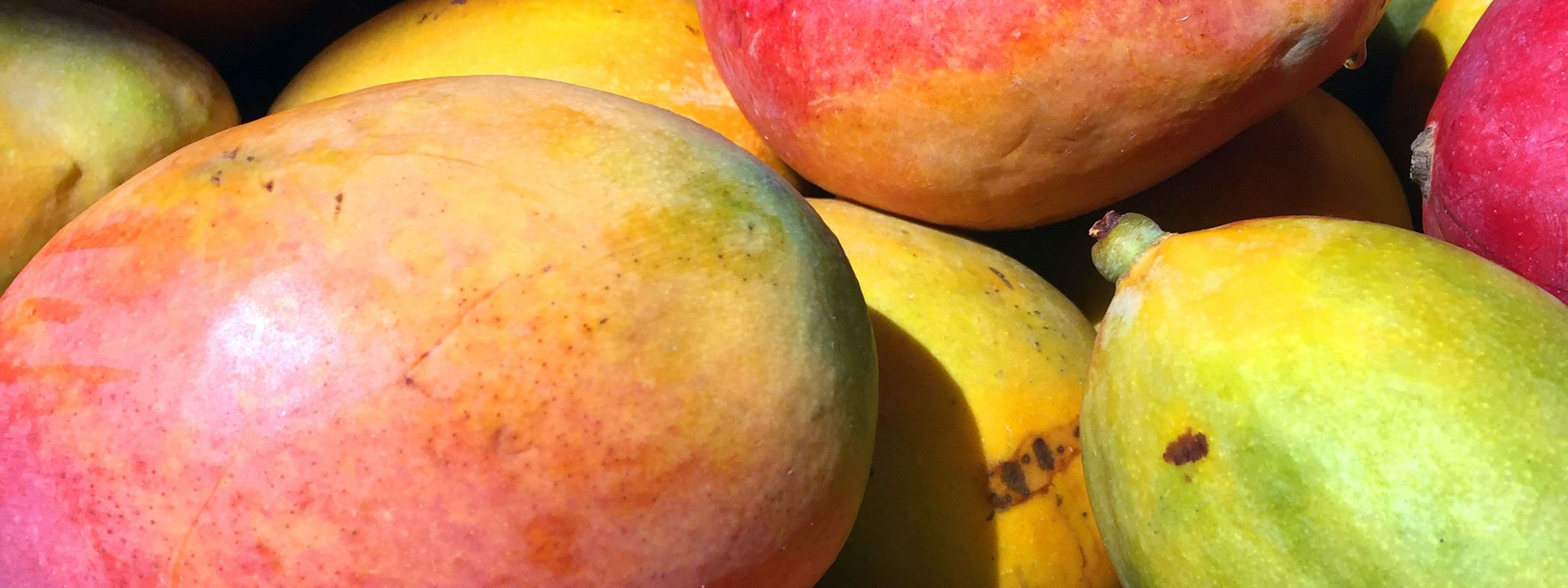Mango
Tropical vitamin-boost
Intro
Sweet, exotic and healthy, the mango belongs to some of the most popular fruits around the globe. It can be used in a variety of ways, from savoury to sweet dishes. Mango is also popular due to its valuable nutrients, rendering it a superfood.
Did you know that mango trees are considered holy in India? They are often used as a sacrificial fruit in many temples.

What is a mango?
Mango is a tropical stone fruit. The mango tree is a plant species of the genus Mangos (Mangifera) and belongs to the family of the Sumachgewächse (Anacardiaceae).
4000 years ago, the mango tree was cultivated in India. It yields fruits, oils and is often implemented as a healing substance. The mango tree can grow up to 30 metres high and carry up to 300 fruits at a time. Typical fruits are oval shaped with yellow-orangey flesh. The peel, depending on the type, can range from red, green, and yellow.

Where does mango come from?
Initially, the mango was cultivated in South Asian countries such as India. Nowadays, the mango is native to tropical and subtropical regions and is even cultivated in southern European countries such as Spain, Portugal and the Canary Islands.
Which varieties are there?
Today, you can find up to 100 different types of mango. Supermarkets usually only offer a small selection. Here are the most popular types:
Haden
-Yellow-fibrous flesh, yellow-red peel
Keitt
-Not fibrous, yellow flesh, yellow peel
Kent
-Fibrous, orange flesh, dark red peel
King
-Firm, yellow flesh, orange peel
When are mangoes in season?
Depends on the country of origin. In Germany, you can usually get it all year round.
Our tips for how to enjoy mangoes:
Curries, chutney, muesli, porridge, soups, salads, juices and concentrates, alcoholic drinks, smoothies or dried as a snack.
Mango Nutrition facts per 100g:
| Typical Values | 100g |
|---|---|
| Calories | 60 |
| Fat | 0.4g |
| Carbohydrates | 15g |
| Fibre | 1.6g |
| Sugar | 14g |
| Protein | 0.8g |
Nutrients found in Mango:
Vitamins: Beta-Carotene, B-Vitamins, Vitamin C, Vitamin E and Folic Acid
Minerals: Sodium, Potassium, Calcium, Magnesium, Phosphate, Iron and Zinc
Secondary plant substances: Carotinoides

